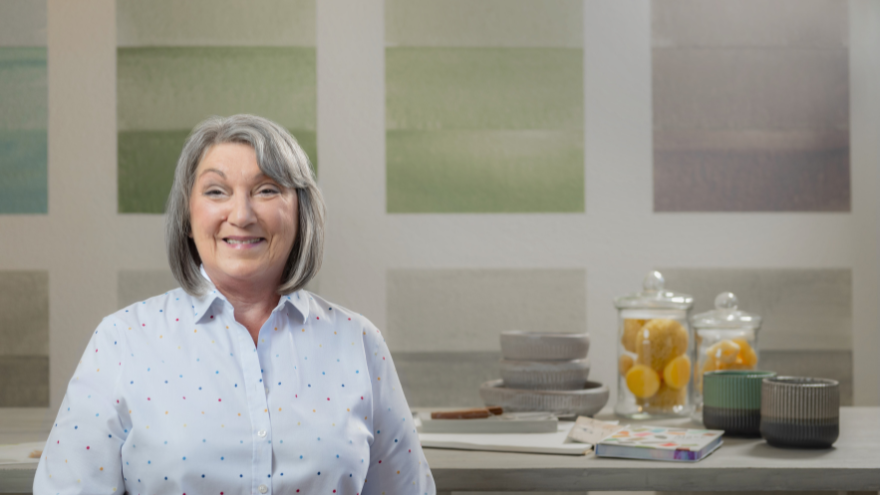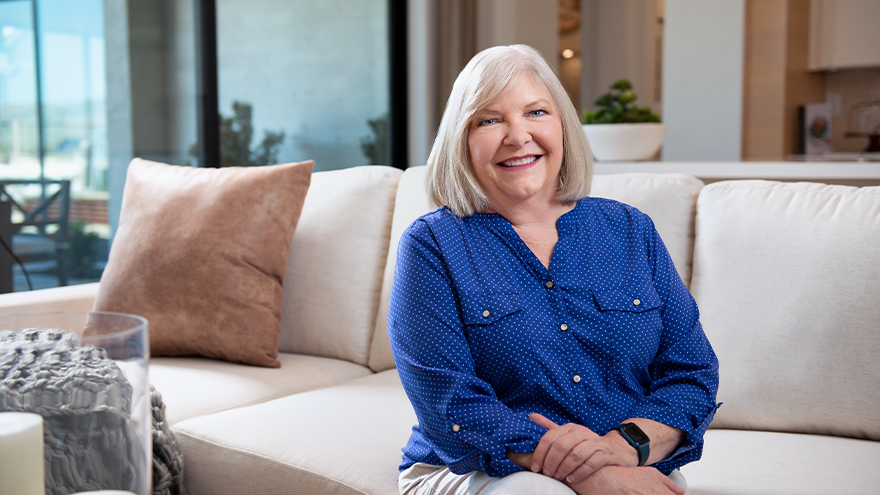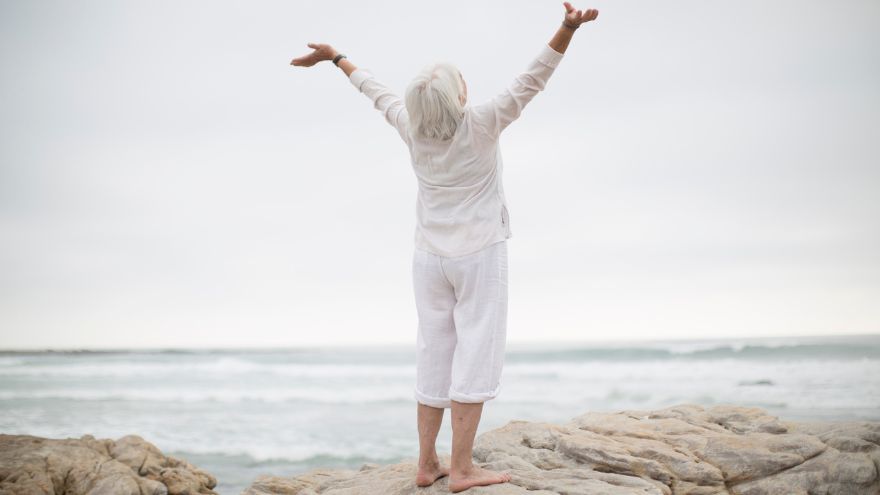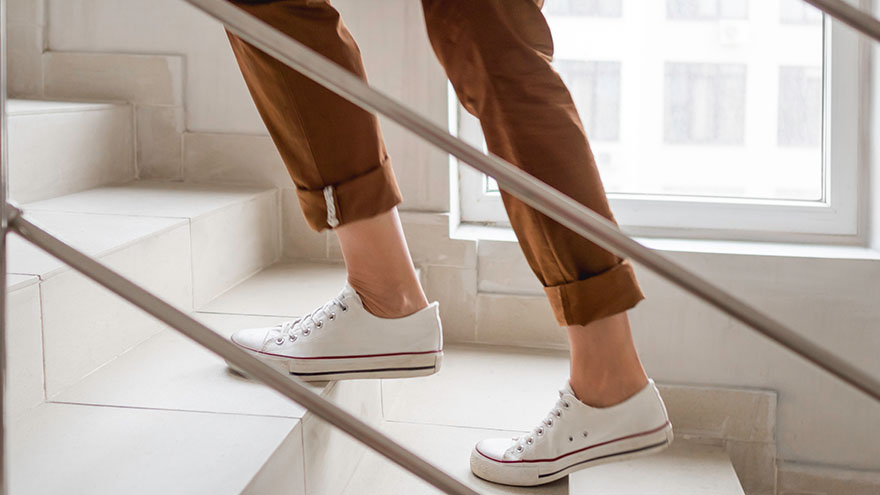Search
-
Meet Sterling Silver Club Member Debe Fennell
You may recognize Debe Fennell from the Senior Care Plus advertising campaign that premiered last October. Debe is a Reno resident who enjoys staying busy with her career, gardening, music and more. We’re excited to introduce her as our featured Sterling Silver Club member for this fall. From Coast to Coast Debe was born in 1949 in the historical city of Elmira, New York. Mark Twain (Samuel Clemens) also lived in Elmira, which is where he got married, had children and wrote a few of his famous novels, including The Adventures of Huckleberry Finn. In fact, Mark Twain was a friend of Debe’s great-grandfather, who migrated from Europe to build what used to be called The Elmira Hotel. Debe and her family moved from Elmira to Kentucky in 1950, where they lived until Debe was 14. Debe grew up with three sisters and two brothers. Her family moved to Arkansas in 1964 and lived there until 1970. Debe graduated from Southside High School in 1964 and was part of the school’s first graduating class. After high school, Debe traveled to London with a group of missionaries to sing at the Lambeth Conference. When she returned, she went to the University of Arkansas - Little Rock for a couple of years before moving to Reno, Nevada in 1970. Debe spent the next 15 years in Reno, enjoying life as a self-proclaimed ski bum and working at various jobs. Her first job in Reno was at the YMCA of the Sierra on Foster Drive, before Debe completed dealer school through Harrah’s Casino and became a high-limit blackjack dealer. In 1985, Debe moved from Reno to Nashville, where she began an exciting career in the music industry. Making History in Music City Debe’s first job in Nashville was working as a journalist for a music publication. Her other business ventures included being a talent coordinator for two nationally syndicated radio shows, and a national records promotion executive for Sony/BMG, Curb Records, Magnatone Records and Giant Records. She was one of very few female Vice Presidents in the music industry in Nashville at the time, and worked for many big names in country music, including Tim McGraw and Randy Travis.
Read More About Meet Sterling Silver Club Member Debe Fennell
-
Your 9-Step Guide to Prevent Falls
According to the Centers for Disease Control and Prevention (CDC), one out of three adults aged 65 or older, fall each year. But less than half of those who fall talk to their healthcare provider about it. What’s more, among older adults, falls are the leading cause of both fatal and nonfatal injuries. Senior Care Plus, a Medicare Advantage Plan by Hometown Health, and Renown Health Nurse Educator, Darlene Roberts, worked together to provide a list with simple tips to help you prevent falls. 1. Exercise Exercise strengthens both your muscles and bones and improves balance which is a key factor to preventing falls. The stronger you are, the less likely you are to fall. And, if you do fall, you are less likely to be injured. 2. Vision Check Vision is an import part of fall prevention, have your eyes check by an eye doctor at least once a year. Update your vision prescription and replace your eyeglasses as needed. 3. Install Safety Equipment in Your Bathroom Installing grab bars in your home bathroom provides a way for you to help yourself in and out of challenging situations. It also provides support if you suddenly feel week or unstable. Having a grab bar to lean on or hold onto when you feel yourself falling or slipping can help prevent falls. Rubber mats eliminate slick surfaces that increase your risk of falling. Learn more about safety and medical equipment that are available through the Care Chest of Sierra Nevada. 4. Helpful Items in Your Bedroom A light within reaching distance is an important item to have in your bedroom. One reason adults fall is because they wander through a dark room, often to get to the bathroom at night, and can’t see where they are walking. Having a light within reach that is quick and easy to turn on before walking around a room can make it safer and decrease your risk of falling. Having a bedroom that is organized and furnished in a way that is easy to navigate is also important. If your bedroom is cluttered and hard to walk around without tripping or running into things, it might be worth reorganizing the area to define a clear walking path. 5. Helpful Items in Your Living Room Similar to your bedroom, your living room should have a light that is easily accessible. Sofas with armrests are helpful for support when getting up and sitting down. Avoiding clutter in your walkways, rugs that are not secured down and unstable furniture are important to consider when preventing falls. 6. Actions to Avoid in Your Home There are other ways to fall besides slipping or tripping while walking. Never stand on chairs, boxes or other unstable items in your home. Walkways should be tidy and free of objects that you could trip on. Spills should be cleaned up right away to prevent slipping. 7. Wear Appropriate Footwear Wearing shoes with non-slip soles and closed toes can help prevent you from falling. Having shoes that fit properly, are made from hard rubber (like tennis shoes) and provide good support help prevent tripping and falling. Shoes with a collar that support the ankle and a well-padded tongue for the top of your foot can also help prevent injury to your feet. 8. Review Your Health & Medications at your Annual Health Check-Up It is important to review your health and medications with your healthcare provider so they can assess if you are at risk for falls. You should discuss your vision, heart health and blood pressure at your annual health check-up. These things can play a role in the risk of falling. Reviewing your current medications is also important. If medications are making you dizzy, talk to your provider about adjusting the dosage so you can feel more stable and balanced. When talking to your doctor about medications be sure to include your vitamins and supplements. Finally, Have your healthcare provider check your feet and discuss proper footwear yearly. Remember to speak up and talk openly with your healthcare provider about fall risk and prevention 9. Avoid Smoking and Alcohol Balance is important in preventing falls. Alcohol consumption negatively affects balance and increases your risk for falls and fractures. It also increases your risk for cancer, liver damage, osteoporosis, high blood pressure and strokes. Smoking is connected to frailty in older adults. It prevents the development of muscle tissue and breaks down healthy muscle tissue due to the lack of oxygen in your body. Stay up-to-date with resources, classes and workshops on falls prevention with UNR Med's Sanford Center for Aging.
-
Meet Janelle Wood: Family, Hobbies & Everything In Between
Janelle Wood’s life has been filled with moves across several states, travel, different jobs, multiple hobbies and best of all – her big family. She is very close to and proud of her entire family, including her six children, six grandchildren and extended family members. New Chapters Janelle was born in 1950 in Fayetteville, Arkansas. She lived there her entire childhood and attended the University of Arkansas, Fayetteville where she received her Associate degree in Accounting. She then moved a few different times to various states including Louisiana and Arizona. In 1981, she and her family moved to Reno where she worked for a construction and mining supply company. In 1993, they relocated to a small town in southern Georgia called Thomasville, where Janelle worked for another mining and manufacturing company. “I was ready for a change of scenery and wanted to explore living in a new area,” said Janelle. “I was intrigued by moving to a smaller town to raise my children.” She and her family lived there for about 10 years when she eventually got transferred to Chicago for her job, to work at the company’s headquarters. “I was once again excited for another change and was happy to experience living in a big city,” said Janelle. “I loved my job and getting to travel as much as I did.” Janelle worked for the company in Chicago until 2014 when she decided to retire and move back to Reno to be closer to her son, daughter and grandchildren. Living to the Fullest Today, Janelle lives in Damonte Ranch in south Reno. She loves spending time outdoors, especially in the mountains and by the water. Her other hobbies include reading, cooking, doing puzzles, playing computer games antique shopping and something very unique – exploring old graveyards. “I love how they’re full of history and each one is different – I also enjoy reading what the headstones say, and the stories they tell,” said Janelle. “When I travel, I like to explore the old cemeteries that are nearby.” Janelle’s son even bought her a book called 129 Cemeteries to Visit Before You Die. She’s been to a few of them. As for traveling, Janelle’s favorite destination she’s been to is Catalina Island – she loves the history there. She also loves Chicago, Portland, Seattle, Canada and Mexico. “I’m always up for going someplace new,” said Janelle . Janelle Wood hiking to Rainbow Falls in Mammoth, CA When Christmas rolls around, Janelle loves to decorate. Her family finds it interesting just how crazy about Christmas she is. “I have 31 totes of Christmas décor and a dozen large decorations,” said Janelle. “My entire storage room is full of Christmas decorations. I start decorating the day after Thanksgiving and it takes me about 2 to 3 days to put everything up.” Janelle said Halloween is her second favorite holiday, which she also loves to decorate for. Family Values Above all else, Janelle’s favorite thing about being retired is having so much free time to spend with her children and grandchildren who live here in Reno. “I love helping my grandkids with their schoolwork and attending their sports and activities,” said Janelle. She has been volunteering at her grandchildren’s schools here in Reno ever since her now 14-year-old grandson started kindergarten. “Family is the highlight of my life,” said Janelle. She also makes sure to stay in contact and visit as often as possible with all of her family that lives out of state, including three of her children, one of her grandkids and some of her extended family. “One of my great nieces, Madison Marsh, was recently crowned Miss America, and another one of my great nieces, Madeline Bohlman, will be competing this summer for the title of Miss USA, as the current Miss Arkansas USA,” said Janelle. “I’m very proud of both of them for using their platforms to further such important issues; pancreatic cancer research and mental health, respectively.”
Read More About Meet Janelle Wood: Family, Hobbies & Everything In Between
-
Sterling Silver Club Shining Stars: Mark & Dana Combs
Dana and Mark Combs met through mutual friends and had a long friendship before they became a couple in 2009. They were married in 2011 in a private ceremony at a small Reno chapel, and a few months later had a big celebration with their family and friends. Encouraging Others to Succeed Over the years, the happy couple has spent much of their time volunteering and giving back to others in their community. Twenty-six years ago, Mark became a bilateral lower limb amputee. For the past 10 years, he has been a prosthetic consultant, helping other amputees learn how to cope with various challenges and encouraging them to keep living life to the fullest. “Mark is great with helping people,” said Dana. Dana also does a lot of rewarding work through a Philanthropic Educational Organization (P.E.O). She is an advocate for raising money to help women ages 18 and up gain an education. Dana also enjoys tutoring English as a second language. Enjoying Quality Time, Hobbies & Travel When Dana and Mark aren’t helping others, they are spending time with their family and friends, their dog Mia (a 3-year-old Maltipoo) or enjoying one of their many hobbies. Some of Mark’s favorite things to do include playing Solitaire and strumming on his guitar. “I love to garden and play crossword puzzles and word games,” said Dana. “I’m really looking forward to the springtime to spend more time in the garden.” She loves to work out and has a membership at the UFC gym in Reno through her Senior Care Plus gym benefit. Dana also has her own online Etsy store, where she sells homemade jam jars, candle holders and vintage dolls. “Last summer I sold my first edition Barbie that I got when I was 9 years old,” said Dana. “I made quite a profit on it.”
Read More About Sterling Silver Club Shining Stars: Mark & Dana Combs
-
11 Tips Caregivers Need to Know
Becoming a caregiver or playing a more active role in another’s healthcare is a big responsibility. At some point, almost all adults will support an aging parent or a loved one in need. Keeping track of their needs and wellbeing, while also prioritizing your own can become overwhelming. It’s important to know: you are not alone, and help is available. Read on for 11 tips to help you manage your time, your own wellbeing and your loved one’s care. Self-care comes first. When your main priority is the person in your life who needs care, it’s easy for your own needs to take the backseat. Give yourself time each day to focus on your personal wellbeing. It’s hard to give a loved one the care they need if your own needs are not met. Prioritize the Activities of Daily Living (ADL). Make a note of what ADLs your loved one can do alone, what they need help with and what activities require the most help. This will help you work through the day with them, as well as plan out how the day’s activities will go. Do a home safety audit. Do showers, bathtubs and steps have safety grab bars? Look around the house for additional tripping hazards, like rugs or electrical cords. If your loved one struggles with day-to-day navigation of the home, consider scheduling an occupational therapy appointment. This type of therapy helps a person develop or maintain the motions required to accomplish daily tasks. You might also qualify for a referral to in-home healthcare, such as Home Care. Have the hard conversation. The best time to discuss views about end of life care and to learn what choices are available is before a life-limiting illness or crisis occurs. With advance care planning, you can help reduce the doubt and anxiety related to decision making at the end of life. Completing an Advance Directive is a great tool to sort out all these decisions before they’re needed. Attend a free workshop to learn more and complete this important document. Identify when you need respite. Respite care involves receiving a short-term break from caregiving. Organizing in-home care for your loved one will allow you to step away and tend to your needs. By identifying what kind of respite care you are seeking, you can find the right person to provide you with that much-needed break. Don’t wait until you feel overwhelmed, plan ahead. Write down insurance contact information. Have a direct connection to the right insurance professional for support and advice. If your loved one is eligible Medicare, this is a good opportunity to review their current selections and if they would benefit from a Medicare Advantage Plan or Medicare Supplement Insurance. Seeking out expert advice or information on Medicare options is a great way to navigate this. Consider calling a broker, or attend a free educational seminar with Senior Care Plus. Gather legal and financial information. Make a list of all existing legal documents and financial accounts that your loved one has. These might include a will, advance directive, power of attorney, bank accounts or investment accounts. If you have questions about how to manage them, or need assistance in setting up additional framework, reach out to a lawyer, legal service, financial adviser or bank representative. Create an inventory of medical information. Identify where all of your loved one’s medical records are, as well as a list of providers or healthcare practices where they have received care. Consider if you should have your loved one give you Proxy Access in MyChart, which allows you to access all the features in MyChart on their behalf, including viewing upcoming appointments, viewing test results and emailing a doctor on their behalf. Make a list of what others can do. Think about all the little (and big) things that need to happen, and write down tasks that others could take care of you. When someone says “let me know what I can do” you’ll be ready with a pre-written list of items they may be able to assist with. Tasks could include tackling around-the-house repairs, scheduling lawn work, helping to walk the dog, taking a car for an oil change and cleaning. Find programs and events for social enjoyment. If and when possible, seek an activity outside of the home. Look for community centers that have programs for seniors, recreational activities or meals that you can patriciate in together. If leaving the home is not an option, arrange for visits or in-home activities, such as movie nights, card games or time to visit with family. Research long-term options. If you will be considering a nursing home or assisted living, make a list of amenities that you and the person you are caring for would like. Take this list with you when visiting potential locations to make sure you don’t forget to ask about each item.
-
5 Tips for Healthy Aging
September is National Healthy Aging Month, which is described by Healthy Aging Magazine as a “month designed to focus national attention on the positive aspects of growing older.” What does healthy aging mean to you? If you're like most people, you're looking forward to removing the negative from your life – negative energy, thoughts, people and activities that don't contribute to your best life. While we remain focused on ridding ourselves of the negatives, we can forget about ways to strengthen the positive parts of our lives. Dr. Shruti Basho, a family medicine physician at Renown Health’s senior-focused medical group, provides us with five positive behaviors to focus on to improve happiness and life satisfaction. Healthy Aging in 5 Easy Steps Connect – Humans are naturally social creatures! Build connections with friends, family, colleagues and neighbors. Strong interpersonal connections help enrich your life with new experiences and opportunities. Having a support system to call upon in both times of need and times of celebration is priceless, especially as you age. Forming these bonds helps you stay healthier and happier well into your aging journey. Joining the Sterling Silver Club is a great place to meet more people in the community who want to live a healthy, fulfilled life just like you. Be Active – Regular exercise, particularly as you grow older, is vital to increase and maintain your endurance, strength and balance. But exercise doesn’t have to be a chore! Pick a physical activity that you enjoy – whether it be enjoying a nature walk, taking a power weightlifting class or anything in between. Being active will also help you build strong connections with others. If you need a workout buddy in your neighborhood, Nextdoor is a great resource to find people who live right around the block from you and may be looking for their next exercise partner. Take Notice – Curiosity and mindfulness can be an impactful motivator in positive cognition and behavior as you age. Like a child, see the wonder and beauty of the world. Notice the things around you – the weather, the landscape, the mood and the feelings of people. According to Harvard Medical School, changes in the aging brain "enable us to become better at detecting relationships between diverse sources of information, capturing the big picture, and understanding the global implications of specific issues.” By taking notice, it’s easier to learn to appreciate the things that matter. Keep Learning – Engaging with lifelong learning is one of the best ways to keep your mind active. Keep trying something new! Challenges keep you on your toes and increase your confidence and excitement in your day. Don’t know where to start? EPIC (Educational Programs Inspiring the Community) offers a diverse personal enrichment and professional development curriculum at Truckee Meadows Community College ranging from art classes to accelerated training certificate courses. Give – Be generous with your time, your knowledge and your talents by giving to friends, family and the community when you have the capacity. Lending yourself to others doesn’t have to be taxing – saying thank you and even just giving someone a smile can change the course of someone’s day. If you’re looking for a hands-on way to give back, Nevada Volunteers is a great place to find volunteer opportunities near you. Renown Health is also always looking for volunteers who are passionate about making an unforgettable difference to the people and communities we serve. Practice these five tips to improve happiness and quality of life at any age.
-
Fall Recovery Gets Patient Back to Life and Movement
Standing at the top of the stairs to the basement Sharon Sturtevant was chatting with her grandson in the kitchen. Suddenly, Sharon stumbled and fell down the stairs. “The last thing I remember was my head hitting the floor before everything went black,” she recalls. Her grandson, Oliver, quickly called 911 and paramedics arrived on the scene, taking her by ambulance to Renown Regional Medical Center where she was diagnosed with a broken collarbone and a neck fracture that would require complex surgery involving fusion of her neck. Fall Recovery Begins After her surgery, Sharon was transported to the Renown Rehabilitation Hospital and her recovery process began. Sharon smiles as she describes the rehab hospital team “They are fabulous here, I learned so much about how my body moves, and the proper way to move it. At home I wouldn’t have known what to do,” she confesses. “They set me up for success to return home and not get injured again.” At Renown Rehabilitation Hospital, different therapists coordinated a custom plan to help Sharon recover from her injuries. Ultimately, the goal of her physical therapy was to help restore and improve her strength, reduce pain and increase her mobility for stamina and balance. Physical Therapy Key to Successful Treatment of Falls “My recovery after the operation was an eye-opener,” Sharon declares. “I had no idea how much went into regaining everyday moment.” During her rehabilitation hospital stay, she had to re-learn how to swallow, go up and down stairs, as well as successfully get in and out of a wheelchair, which involved transferring her body weight safely. Due to hormonal changes after menopause women are 50% more at risk for falls than men, according to research. Sharon now has a greater awareness of how to move her body and is significantly stronger than before entering her physical rehabilitation sessions. Not everyone knows that everyday mobility is impacted by four basic skills: stepping, trunk flexibility, upright posture and weight shifting. “I don’t know how I could have gotten this far without the wonderful therapists here,” she shares. “They are so thorough. Proper alignment was encouraged helping me to walk and stand correctly. They were all so nice and patient with me,” she states. “I actually had less pain because I didn’t hurt myself moving the wrong way.” Falls Are Common Among Aging Adults As we age balance becomes more important. Unfortunately falls are common among older adults with negative quality of life effects, even fatalities. According to the Centers for Disease Control and Prevention (CDC), one in four seniors fall each year in the U.S. A comprehensive physical therapy plan for sudden falls or chronic conditions is a safe, effective alternative treatment to medication such as opioids. Today Sharon is back at home with a new banister installed on the basement stairs. As a music lover she is enjoying her musical grandchildren Oliver and Eliana who play instruments. She looks forward to attending their upcoming school concerts. Sharon remembers the staff at Renown Rehabilitation Hospital fondly, “They were unfailingly patient, supportive, informative and understanding.” Her advice to those unexpectedly finding themselves in the rehabilitation hospital is, “Listen to your therapists carefully and follow their instructions.”
Read More About Fall Recovery Gets Patient Back to Life and Movement
-
Don’t Put Your Bladder Health on Hold
Millions suffer from urinary incontinence (urine leakage). Often people feel as if their bladders control their lives. But this doesn't have to be your story. Bladder control issues are treatable and you can take steps to help control your bladder. What is urinary incontinence? Men and women of all ages can have difficulty controlling their bladders. Urinary incontinence occurs when the muscles in the bladder that control the flow of urine contract or relax involuntarily. Is there more than one type of urinary incontinence? Yes, there are three main types: Stress incontinence is when the bladder leaks small amounts of urine as a result of physical stress or pressure on the muscles supporting the bladder caused by coughing, sneezing, laughing, lifting or any sudden physical exercise such as running or jumping. Urge incontinence is the inability to control a strong urge to go without advance warning, limiting the time needed to get to the bathroom. Overflow incontinence occurs when the bladder does not empty properly. As a result, over time, large quantities of urine are stored, causing the bladder to overflow (this is more common in men and is often the result of an enlarged prostate blocking the bladder opening). Are there any tests that can determine the cause and type of incontinence? Your doctor may have you track your fluid intake and output in a Bladder Diary. A urinalysis can be checked for infection, traces of blood, or other abnormalities. Blood tests can look for chemicals or substances that may relate to contributing causes. Other testing may be an ultrasound, cystogram or post voiding residual measurement. How is urinary incontinence treated? Exercises to strengthen the pelvic floor muscles or restrain the bladder to hold on for longer. Medication can relieve and control the troublesome symptoms. If there is an infection an antibiotic is used. Surgery can repair weakened muscles or remove blockage. Special products such as pants, pads, collection devices, and chair and bed protection may be needed if the problem cannot be controlled. How do you strengthen your pelvic floor muscles? To make your pelvic floor muscles stronger, alternate between squeezing and relaxing them. Following the steps below may help: Squeeze your muscles for one second and hold. Relax your muscles for two seconds. Each time you squeeze and relax, it counts as one set. Complete five sets. When you can do the exercises easily, increase to doing them 10 times per day. When that gets easy, try to squeeze and hold the muscles for three seconds and then relax the muscles for three seconds. As your pelvic muscles get stronger, you can progress to longer squeezes for about 10 seconds. Be sure to relax between squeezes so that your muscles can rest before squeezing again. You should do these exercises in three different positions. Do 10 sets lying down, 10 sitting and 10 standing. It is important that you develop the habit of doing the exercises every day. You may want to exercise just after you get up in the morning and right before you go to bed at night. What can I do to help control incontinence? Watch your weight, practice pelvic floor muscle exercises, eat plenty of fresh fruits, vegetables and fiber to prevent constipation. Most importantly, talk to your doctor regarding incontinence issues, don’t be embarrassed!







